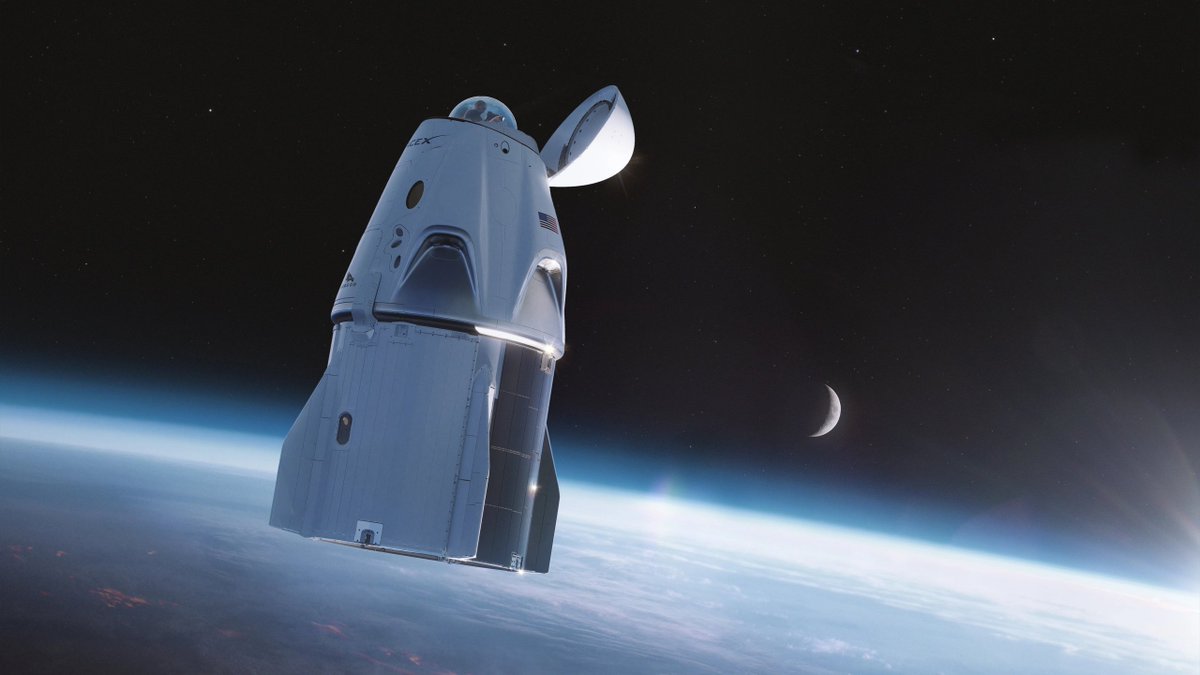
As promised, here's your who's who and what's what guide to #Inspiration4, the first privately crewed orbital flight. THREAD.
First up - who's who:
1) US technology billionaire Jared Isaacman - Commander and funder of the venture.
First up - who's who:
1) US technology billionaire Jared Isaacman - Commander and funder of the venture.

2) Physician assistant Hayley Arceneaux - survivor of childhood bone cancer and now employee of St Jude Children Research hospital, the very place that saved her life and the benefactor of this mission. Chosen to represent St Jude's. Will be first to space with a metal leg pin. 

3) Geoscience professor Dr Sian Proctor - Mission pilot. She'll take over if anything goes wrong. Narrowly missed out on becoming a NASA astronaut in 2009. Excellent science communicator. Won her place through a competition. 

4) Air Force veteran Christopher Sembroski - now works in the aerospace industry and won his place through a ticket raffle that reportedly raised $113 million for St Jude's. 

Although they have undergone 6 months or so of training, including:
- zero gravity flights
- 12- and 30-hour mission simulations
- lessons in orbital mechanics
- stress tests (including g-force/centrifuge)
- emergency drills
no-one aboard is a fully trained astronaut. Huh.
- zero gravity flights
- 12- and 30-hour mission simulations
- lessons in orbital mechanics
- stress tests (including g-force/centrifuge)
- emergency drills
no-one aboard is a fully trained astronaut. Huh.
This makes #Inspiration4 a unique experiment - how will civilians with minimal training cope? After all, if we are going to see hundreds or thousands living and working in space by the end of the century, they definitely won't all be astronauts. Gotta start sometime... 

Next - why?
Isaacman always wanted to go to space - and hey, when you're a billionaire, you can make that happen. But he wanted his flight to mean something. So, he teamed up with SpaceX and through this venture, they are hoping to raise $200 million for the hospital.
Isaacman always wanted to go to space - and hey, when you're a billionaire, you can make that happen. But he wanted his flight to mean something. So, he teamed up with SpaceX and through this venture, they are hoping to raise $200 million for the hospital.

But why not just donate the money to St Jude's? Although the mission will be costly, it will be less than the target goal. The launch itself costs $28-30 million, but then there's other factors e.g. training, modifications to the capsule, supplies etc but less than $200 million.
Next - where?
575 miles up, in orbit around the Earth (higher than the ISS at 400km). They'll take 90 minutes or so to complete each orbit. If they fly overhead at night, there's a good chance the capsule will be naked-eye visible.
575 miles up, in orbit around the Earth (higher than the ISS at 400km). They'll take 90 minutes or so to complete each orbit. If they fly overhead at night, there's a good chance the capsule will be naked-eye visible.
They will be in Crew Dragon Capsule "Resilience" - just 8x4m for three whole days. But the ISS docking port has been modified with an enormous glass dome, so the team will get fantastic views of Earth. 

Next - what will they do?
They'll be conducting science experiments on themselves (heart rate, sleep + cognitive tests). They will also be showcasing items for auction later, to raise funds. And having a butt-ton of fun.
They'll be conducting science experiments on themselves (heart rate, sleep + cognitive tests). They will also be showcasing items for auction later, to raise funds. And having a butt-ton of fun.

Finally - how?
Falcon 9 rocket from Cape Canaveral, Florida. They'll parachute back down into the sea.
It's being live-streamed on Youtube and Netflix - launch window opens 1am BST tonight (or tomorrow morning, if you want to be pedantic).
END
Falcon 9 rocket from Cape Canaveral, Florida. They'll parachute back down into the sea.
It's being live-streamed on Youtube and Netflix - launch window opens 1am BST tonight (or tomorrow morning, if you want to be pedantic).
END
CORRECTION: It should be 575km not miles - I purposefully wrote the ISS height in km to have the same units. I'm not sure where miles came from 🙄
• • •
Missing some Tweet in this thread? You can try to
force a refresh










